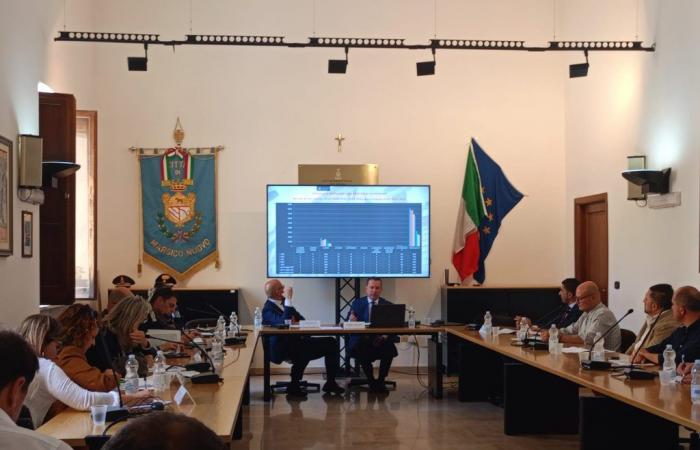Situation point of the prefect in the final meeting of the second cycle of itinerant provincial committees
Declining crime rates in the Alta Val D’Agri, in the province of Potenza, according to what emerges from an analysis of the data referring to the period 2023 and the first 5 months of 2024, illustrated yesterday by the prefect Michele Campanaro to the mayors of the municipalities in the area (Armento, Brienza, Calvello, Corleto Perticara, Gallicchio, Grumento Nova, Guardia Perticara, Laurenzana, Marsicovetere, Marsico Nuovo, Missanello, Moliterno, Montemurro, Paterno, Sarconi, Sasso di Castalda, Spinoso, Tramutola and Viggiano) gathered in the provincial committee for public order and safety (Cposp) presided over by the prefect himself in the headquarters of the municipality of Marsico Nuovo.
The meeting concluded the second cycle of meetings of the Potentino Cposp in a traveling session started at the beginning of the year by the prefect Campanaro to get to know the problems and requests of the local communities closely, and bring the discussion on urban security and integrated security policies to the territories within the framework of the regulatory framework which, from 2017 to today, the prefect explained, illustrating its evolution, has redesigned a “multilevel” system based on the integration between the different levels and areas of competence, and is attentive to social cohesion, also aiming to eliminate factors of degradation and marginalization.
“The data tell us of a trend in crime in clear decline”, observed the prefect Campanaro, underlining “the very solid territorial security structures to counter infiltration of ordinary and organized crime” on which the Alta Val d’Agri can count. On these premises the prefect asked the mayors for an even more incisive commitment, “more than anyone else capable of intercepting the needs and critical issues of the territories”, whose economic and social integrity “remains an absolute priority”.
To this end, he indicated to the local administrators, suggesting them to intervene in this sense, three guidelines to be implemented to raise the standard of real and perceived safety by the communities, as well as liveability of the territories and social cohesion: use video surveillance systems, equipped with cameras with license plate reading connected to the National License Plate and Transit Control System – SCNTT; promote forms of “neighborhood control”, an effective deterrent that involves communities in the care of their territories; enhance and implement local police forces, a fundamental safeguard, also by resorting to forms of consortium between municipalities.
With respect to these three lines of intervention, there are already positive indicators, the prefect highlighted, concluding the meeting with an assessment of the activities in this field. In fact, to date, 70 – almost doubled in the last two years – are the municipalities in the province that have equipped themselves with video surveillance systems, many thanks to financing from the Urban Security Fund managed by the Ministry of the Interior, while 27 have all Protocols with the prefecture on neighborhood control are active, and another 9 are preparing to sign one by July as the approval resolution has already been finalised.
“The balance of the experience of this new cycle of itinerant committees certainly closes with a positive sign and gives us further impetus for the future”, concluded the prefect.






